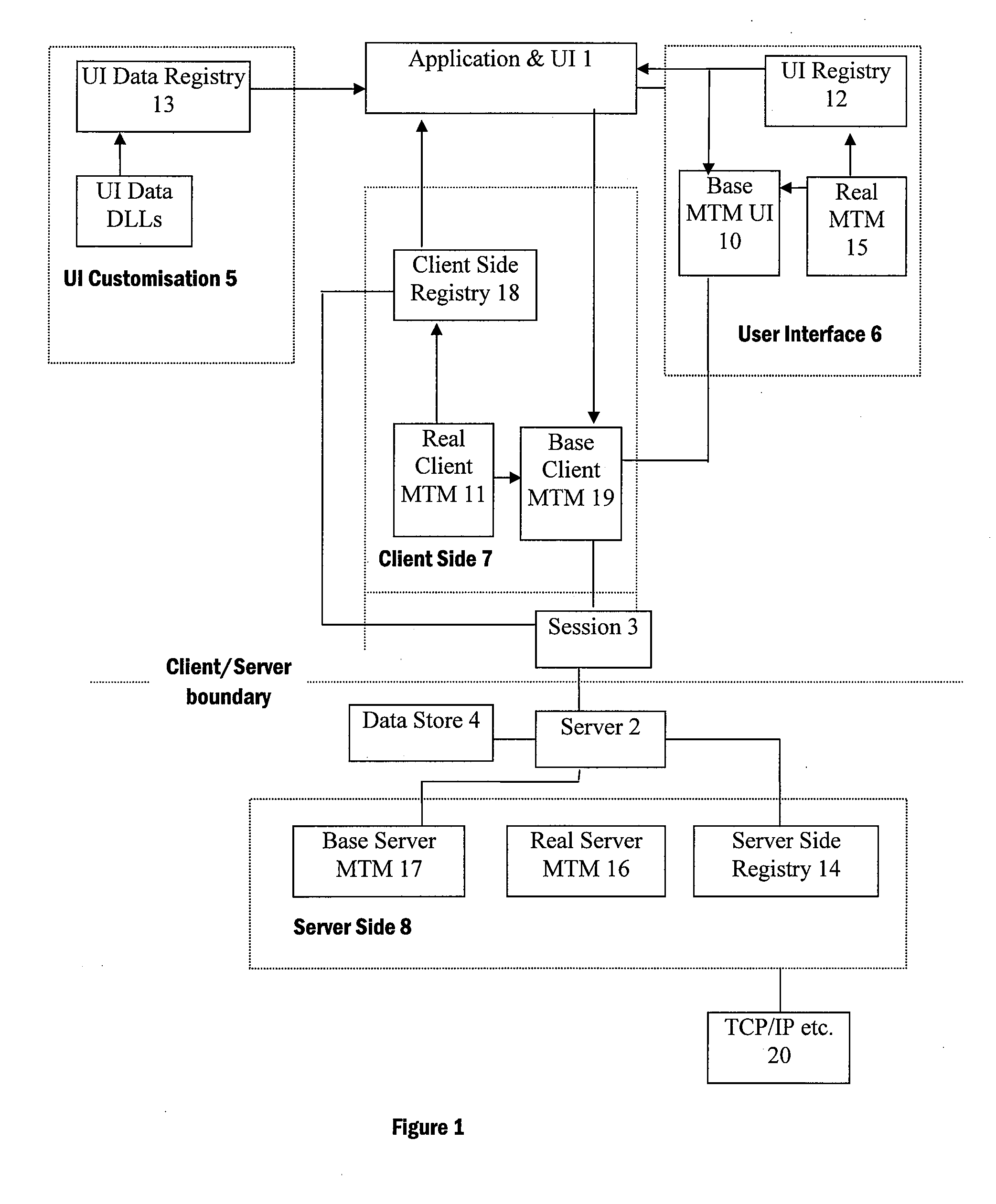Messaging Architecture
a technology of message architecture and message, applied in the field of message architecture, can solve the problems of time-consuming and burdensom
- Summary
- Abstract
- Description
- Claims
- Application Information
AI Technical Summary
Benefits of technology
Problems solved by technology
Method used
Image
Examples
Embodiment Construction
Major Components
[0033] The Messaging Architecture of the present invention is exemplified by the EPOC messaging architecture from Symbian Limited of the United Kingdom. The following discussion presumes some knowledge of object oriented software. For a detailed understanding of EPOC, a variety of public domain sources can be consulted, such as the WWW site www.epoc.com, and freely available software developers kits for EPOC from Symbian Limited.
[0034] The architecture consists of three significant components—the Message Server, which provides true client / server access to all message data, an Application Framework which allows compliant plug-in components to be invoked by a Core Application. This Core Application is the Messaging Application 1, and the functionality supplied by the plug-in components is the implementation of any messaging protocol.
[0035] There are seven major components indicated by the diagram, as follows:
[0036] The Messaging Application and its UI 1
[0037] The ...
PUM
 Login to View More
Login to View More Abstract
Description
Claims
Application Information
 Login to View More
Login to View More - R&D
- Intellectual Property
- Life Sciences
- Materials
- Tech Scout
- Unparalleled Data Quality
- Higher Quality Content
- 60% Fewer Hallucinations
Browse by: Latest US Patents, China's latest patents, Technical Efficacy Thesaurus, Application Domain, Technology Topic, Popular Technical Reports.
© 2025 PatSnap. All rights reserved.Legal|Privacy policy|Modern Slavery Act Transparency Statement|Sitemap|About US| Contact US: help@patsnap.com


